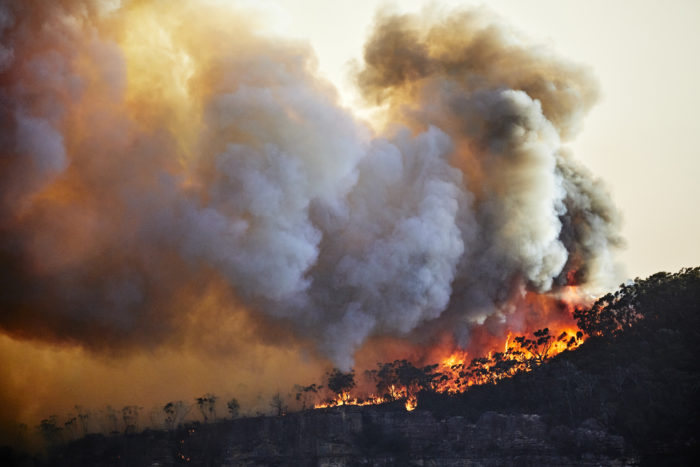Is Weather Risk a Workers’ Comp Problem?

Climate change, the gradual warming of the planet that has become a public policy emergency since at least the turn of the 21st century, has now become a scourge of the insurance industry, including workers’ compensation, where the most vulnerable workers are those we depend on the most.
 The impact of these trends on workers’ comp is a growing concern for the National Comp conference, and a topic we’re pleased to include on this year’s program agenda. Jeff Rush, Workers’ Compensation Program Manager for California JPIA, will share his insights at National Comp 2022 alongside Jill Leonard of the Louisiana Workers’ Compensation Corporation and industry thought leader Joe Paduda on Oct. 20, 2022. Rush shared some of his thoughts with Risk & Insurance in advance of the presentation.
The impact of these trends on workers’ comp is a growing concern for the National Comp conference, and a topic we’re pleased to include on this year’s program agenda. Jeff Rush, Workers’ Compensation Program Manager for California JPIA, will share his insights at National Comp 2022 alongside Jill Leonard of the Louisiana Workers’ Compensation Corporation and industry thought leader Joe Paduda on Oct. 20, 2022. Rush shared some of his thoughts with Risk & Insurance in advance of the presentation.
According to the National Oceanic and Atmospheric Administration’s (NOAA) Climate.gov, the Earth’s temperature has risen by 0.14°F per decade since 1880, and the rate of warming over the past 40 years is more than twice that: 0.32°F per decade since 1981.
The heat and capacity of the globe’s oceans drive extreme weather events, in addition to the effects of uber-hot surface temperatures, resulting in heat illness risk, at work or at play. The 10 warmest years on record on Earth all occurred since 2005.
Jeff Rush says the problem is wide ranging and growing. Rush serves California JPIA., a municipal risk pool with over 120 members, Rush has worked for public entities since 2004, and he’s seen the effects that larger, more intense, and more frequent fires in his area have had.
Extreme Heat Hazards and Beyond
The Centers for Disease Control and Prevention (CDC) lists emergency responders, health care workers, fire fighters, utility workers, farmers, manufacturing workers, and transportation workers as the most at risk for heat-related illness, the causes of which also include air pollution and even indoor climate risks due to the increased need for air conditioning, which can itself result in radon and/or microbial buildup leading to illness.
“Specific to my organization, we provide coverage to a lot of public safety officers, and for us, one of the most obvious exposure increases we’ll face with climate change is the firefighters we deal with, in a couple of ways,” Rush said.
“Fighting more fires in the local areas where they’re employed, and under mutual aid agreements, where they can get be brought to any fire in the state and potentially out of the state. With that, there’s a litany of injuries. Firefighters can have anything from burns to inhalation to exhaustion.”
Indeed, heat related illnesses are on the rise regardless of the indoor versus outdoor divide. A 2021 UCLA Luskin School of Public Affairs study using 11 million claims from the California workers’ compensation system between 2001 and 2018 found that days with a high above 90°F result in a 6 to 9% increase in all cause injury risk across the board, compared to days with highs in the 50s or 60s. As the temperature increases, the correlation is stronger — days above 100°F increase injury risk by 10 to 15%.
The same study found that even sheltered workers, in manufacturing facilities with cooling elements in place but not air conditioning for example, face a similar risk to those exposed fully to the heat in agriculture work. Highs above 95°F for these workers resulting in a 7% higher injury risk than days in the 60s.
Coping with climate change on the organization-wide level has forced insurance companies and workers’ comp program managers to assess their book of business and also their own employee structure, facing the threat of increased claim frequency for insureds, as well as potential business disruptions due natural disasters.
“On the employer level, the key is knowing where your exposure is and assessing that exposure,” said Rush.
“It’s not just fires, it’s also coastal areas and windstorms. If you’ve got a high concentration of employees in an office building in Florida and let’s say there’s a high likelihood of a hurricane coming, mitigation measures have to be taken. There’s many more of these events than even five years ago. Considering that employee concentration is becoming more important.”
The data bear this out. The NOAA’s National Centers for Environmental Information tracks billion dollar weather events. Over the entire course of the 1980s, the planet averaged 3.1 billion dollar weather events per year, by the 2010s, the average reached 12.8 per year to the tune of $891.5 billion dollars in total losses.
Last year (2021) alone saw 20 distinct billion dollar weather events hit communities around the world — the most impactful of which are hurricanes. Hurricane Katrina in 2005 still tops the list of the most devastating natural disasters.
Climate denial has only exacerbated the risk to both workers and the population at large. According to the Yale University Program on Climate Change Communication, 72% of Americans believed climate change was already happening in 2021, while 14% believed it was not.
Drill down in the surveys though, and the results are much more tenuous. Only 57% of respondents thought that scientists agree that climate change is happening, and the same percentage believe that the changes are due to humans. The actual number of actively publishing climate scientists agreeing to the statement that climate change is occurring and is driven by human activities is 97%.
“Over time, most insureds are going to be rated on their experience and so whether or not an organization acknowledges the climate’s role in these increased weather events, they’re going to have to address it,” said Rush. “They can argue over the cause but if they’re seeing frequency and severity increase, it’s going to require action.”
A good first step for employers to take is to participate in the Occupational Safety and Health Administration’s (OSHA) heat illness prevention campaign. The site includes downloadable infographics to inform workers of heat illness risks and the immediate steps to take, as well as tools such as the Heat Stress Calculator.
Overall, it’s the “Water. Rest. Shade” refrain that can save a life on the job. OSHA urges employers to remember their requirements under the General Duty Clause to protect workers from undue stress and injuries due to heat — a task that balloons in difficulty and importance annually. &
Hear more from Jeff Rush and other workers’ comp industry leaders at National Comp 2022 at Mandalay Bay in Las Vegas, Oct. 19-21.










